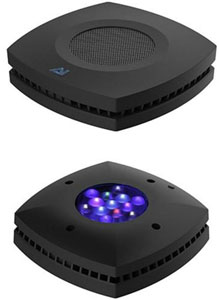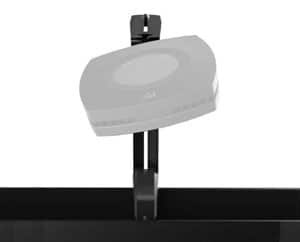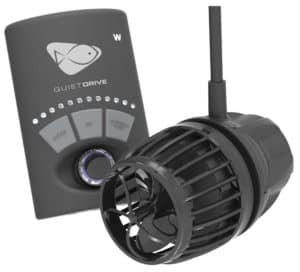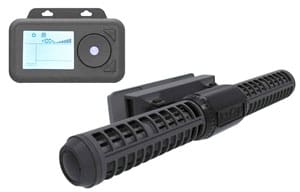Adding coral to an aquarium is what turns it from a fish tank to a slice of the coral reef, but how do you go about creating these beautiful glass boxes when yours is just brand new?
I remember getting ready to add my first corals and I was so excited yet also nervous it was going to melt and die. By following these guidelines you should have no problems when you are ready for adding your first frags (Coral Fragment).
Your first corals can be added to a new aquarium after 2-3 months. The aquarium must finish the nitrogen cycle and have passed through its initial algae blooms. Once water parameters are stable you can begin to add your first few corals. Soft corals and Zooanthids are great corals to start with.
A little bit of planning and research is needed to understand the requirements of the coral you wish to have and all that can be done while waiting for your aquarium to mature. Having a vision of how you would like your aquarium to look in 3 years’ time is a great place to work back from.
Read on to find out all about adding your first corals.
When Can You Begin Adding Coral?
There is no right or wrong answer and every aquarium is going to run a different timeline to another, but there are some general rules of thumb you want to observe to help you have the greatest success with your first coral addition.
8-12 weeks is the recommended time to wait before adding coral to a new aquarium. Corals need stable water parameters to remain healthy and during these first few months, the nitrogen cycle and algae blooms are in process. Once these have run their duration some hardy soft corals can be added.
Patience is the key here and if you can hold off adding your corals until after the following items have been completed it will pay off:
Nitrogen Cycle
During this time your aquarium’s water parameters are going to be going nuts. Your biological filter is growing and your tank should be empty of any livestock. Your water will be toxic until the Nitrogen Cycle has completed and any corals added at this point will most likely perish.
The duration of the nitrogen cycle will vary by the aquarium, but most will take 2-8 weeks on average. Testing the water with high-quality test kits s the only way to track the water parameters.
You Can Find My Recommended Test Kits Here
Algae Blooms
After the Nitrogen Cycle, your aquarium is going to spend the next few months experiencing various algae blooms as part of its natural process of creating its ecosystem. It is fine to add fish during this time, but it’s my recommendation to hold off on adding coral.
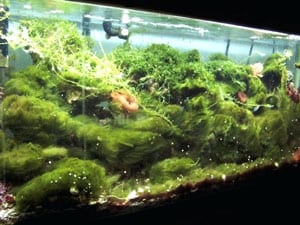
Algae blooms that you are likely to experience will be:
- Green Hair Algae
- Diatoms
- Dinoflagellates
- Cyano Bacteria
Some of these types of algae can easily grow over and smother your new corals. The blooms are unsightly and annoying but they will pass with time. This period can be anywhere from 0-12 months during your first year of the aquarium being started.
Again, every aquarium is different and some algae blooms may be negligible and some may be horrendous. If you add coral during this stage, be sure to stay on top of algae that begins to grow around your corals.
Stable Parameters
Your quest in keeping an aquarium should be to keep stable water. If you can keep your water stable in every parameter then your livestock will thrive. As a beginner you will most likely want to begin with soft corals as these are the most tolerant to swinging parameters, however, they can only tolerate so much.
As your experience grows you will learn what natural levels your parameters will sit at and you should train yourself to aim to keep every parameter stable, especially if you wish to progress onto keeping the more demanding corals like LPS and SPS.
The main water parameters you need to keep as stable as possible as you begin adding corals are:
| Temperature: | 78 – 80°F or 25 – 27°C |
| Salinity: | 1.023 – 1.025 SG |
| Nitrate: | <5ppm |
| Ammonia: | 0ppm |
| Ph: | 8.1 – 8.4 |
Regular water changes will help to go a long way to achieving these then the addition of an Automatic Top-Off system and a Refractometer will really help maintain accuracy.
If you don’t know what these are you can check out these articles for more information:
- Aquarium ATO Automatic Top-Off System – What Is It?
- How To Easily & Accurately Measure Aquarium Salinity
Frequent Maintenance
A good, thorough and regular maintenance routine is one of the best things you can implement with your aquarium. All of the best and most successful aquariums around the world are a result of regular maintenance.
Regular maintenance allows you to keep your tank clean, will help to keep your water parameters within tolerance, keep elements like calcium and alkalinity in abundance via the water changes, keep a close eye on your coral growth, and to help spot any problems early enough to begin any action needed.
Try and set yourself a day of the week to do your maintenance. I do mine every Tuesday evening after my children have gone to bed. By doing your maintenance at the same time each week, it allows for accurate testing and it helps form a routine to keep you from procrastinating.
What Type of Corals are the Best to Start With?
Your first corals should be soft corals like Zoanthids & Palythoas, Mushrooms, Leather Corals, Polyps & Xenia. These are the hardiest and can tolerate fairly unstable water parameters, lower lighting, and water flow, do not need supplemental feeding, and easily reproduce when happy.
Before you even begin to plan what corals to add you need to learn about the different coral families and which are the best to start with. There is no point in spending lots of money on your first frags for them to stand no chance of surviving in your aquarium.
There are three main coral families that you will want to become familiar with:
- Softies – Soft Corals
- LPS – Large Polyp Stony Corals
- SPS – Small Polyp Stony Corals
Softies – Soft Corals
These are by far the easiest and most forgiving corals and are always the first corals recommended you try.
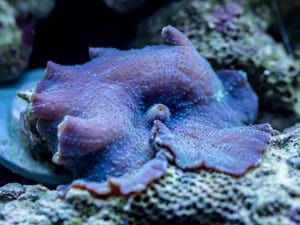
Soft corals require the least amount of light energy so you can keep them with cheaper, lower-quality lighting. They do not require intense, random water flow, they can tolerate water that is not as stable in its parameters and is dirtier because your maintenance is not 100% all of the time.
Some great Softies to research are:
- Zoanthids & Palythoas
- Mushrooms
- Leathers
- Polyps
- Xenia
LPS – Large Polyp Stony
These are the next family of corals I would begin to add once you have been successfully keeping softies for several months. The LPS family of coral will add a dramatic palette of color, shape, texture, movement, and diversity to your aquarium.
LPS aquariums are some of the most beautiful tanks in the world but they do require a higher level of care and equipment to keep them successfully.
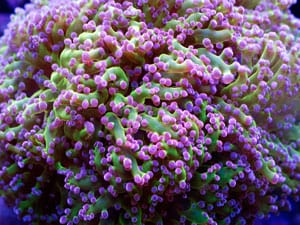
LPS will require lights with higher light energy output, however, you can get away with placing these corals higher up the rockwork if you are using a cheaper brand of light.
They may require more flow depending on the species of coral and you will need to be starting to keep your water parameters stable. Supplemental feedings of coral foods will help see these coral flourish and increase their color intensity.
Some great beginner LPS to research are:
- Hammers & Frogspawn
- Torches
- Bubble Corals
- Candy Canes
- Brains
SPS – Small Polyp Stony
These are the corals that you will need to work your way to in terms of tank stability, equipment, and knowledge. SPS corals are the most demanding of pristine water and stability and are within the reach of every aquarist, you just need to understand them.
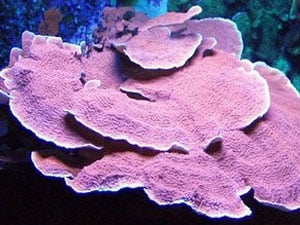
Most SPS corals require intense, high-quality lighting, strong & random flow patterns, stable water parameters, regular maintenance, and sometimes a healthy wallet.
There are some fairly tolerant SPS that I recommend you begin to try first only when you have been keeping your other corals alive and thriving for at least 6 months. You can always leave the top of your rockwork empty so you have a place to put your SPS coral when you are ready to introduce them.
Some great beginner SPS to research are:
- Montipora Capricornis
- Montipora Digitata
- Birdsnest
- Stylophora
SPS to stay away from as a beginner are the Acropora species of SPS. They require the most intense lighting, water stability, and price tags. These are a coral to work towards over the first years of your aquarium journey.
Many aquarists buy them without researching them and soon find them bleached and die within a matter of days or weeks, usually leaving behind a hefty price tag!
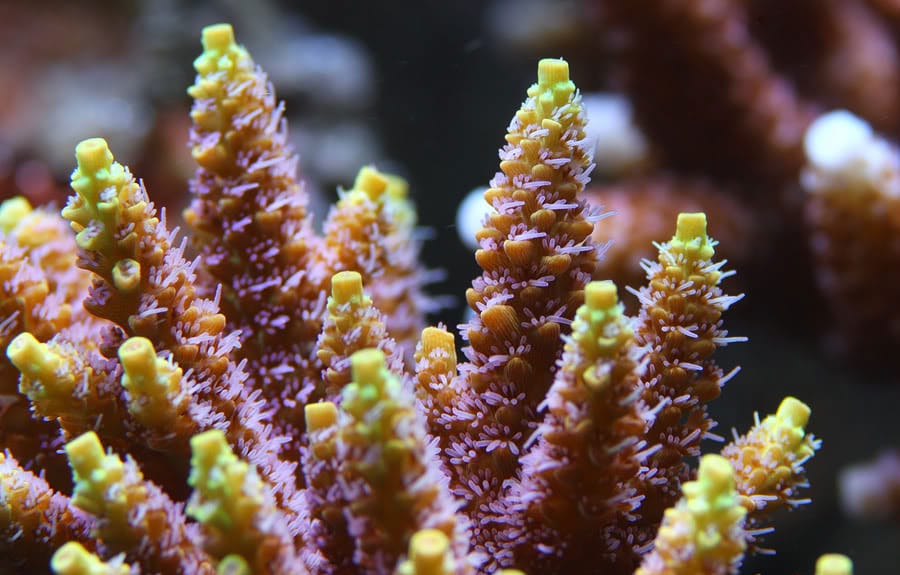
What Equipment Do You Need To Add Coral?
To keep corals, your aquarium will need a high-quality light system capable of delivering at least 100 PAR at the sand bed and lots of random water flow created by one or several powerheads or wave makers. Most corals will need a water flow of at least 10-50x the aquarium volume.
Let’s take a look at all the important factors you will need to address before adding your first coral:
Lights
The main factor when it comes to success with coral always begins with the light you have on your aquarium. There are several types of light systems available in the hobby and depending on the coral you wish to keep will dictate the type of system you will need.
The main types of light systems available are:
- Power Compacts – Just suitable for Softies Only
- Low-Quality LED – Suitable for Softies & LPS
- High-Quality LED – Suitable for Softies, LPS & all SPS
- T5 – Suitable for Softies, LPS & all SPS
- Metal Halide – Suitable for Softies, LPS & all SPS
The higher-quality lighting fixtures have several qualities that enable them to allow corals to thrive under them. They emit high levels of PAR (Photosynthetically Active Radiation), which is the amount of light radiation that penetrates the water to allow the corals to feed using photosynthesis, very similar to a plant.
The recommended light systems have a wide spectral range which means they have been designed to provide the optimum light wavelengths at the right intensity to allow the corals to flourish.
The LED units also allow dimming and color controllability through their controllers or Apps to allow the users the greatest flexibility with their lighting preferences.
The AI Prime HD is a great High Par, Wide Spectral light that is incredibly priced at just over $200. This light is perfect for the beginner with a small, shallow aquarium. It will allow you to keep any corals you want and you can easily add more of them and link them together to be used and controlled as one.
I love these lights because they are fairly cheap and you will never have to upgrade your lights to keep SPS, even Acroporas!, just add another light and you dramatically increase your PAR.
For information on the AI Prime 16HD and a selection of other LED fixtures to suit every size aquarium, I created a complete Buyers Guide to LED Aquarium Lights with my recommendations in several price ranges:
Picking Reef Tank LED Lights – Best Guide For Soft, LPS & SPS Corals
Flow
Corals thrive when they are given the correct amount of flow for their needs. Each type of coral has a specific need, just like lighting, and it is up to you to provide the right amount and type of flow.
The harder the coral is to keep, it usually requires more random and stronger water flow. The majority of flow requirements can be achieved with multiple powerheads and wavemakers, especially the pumps that can be linked to one another or controlled.
You can keep corals that require less intense flow in the same tank as corals that require strong flow by placing them in areas protected by rocks. In your aquarium, the water moving around will be different in every place. The goal is to find the right spot for each coral that will provide it with just the right flow, yet enough light to allow it to produce energy.
There are several types of products that create random flow for your aquariums:
1. Rotating Nozzles
There are types that fit on the end of powerheads and use the flow to rotate the nozzles allowing for random flow and there are types that are secured to the aquarium and use motors to rotate the nozzle to randomize the flow.
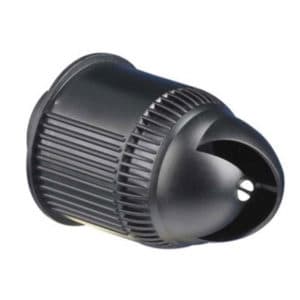
Available Here at Amazon.com
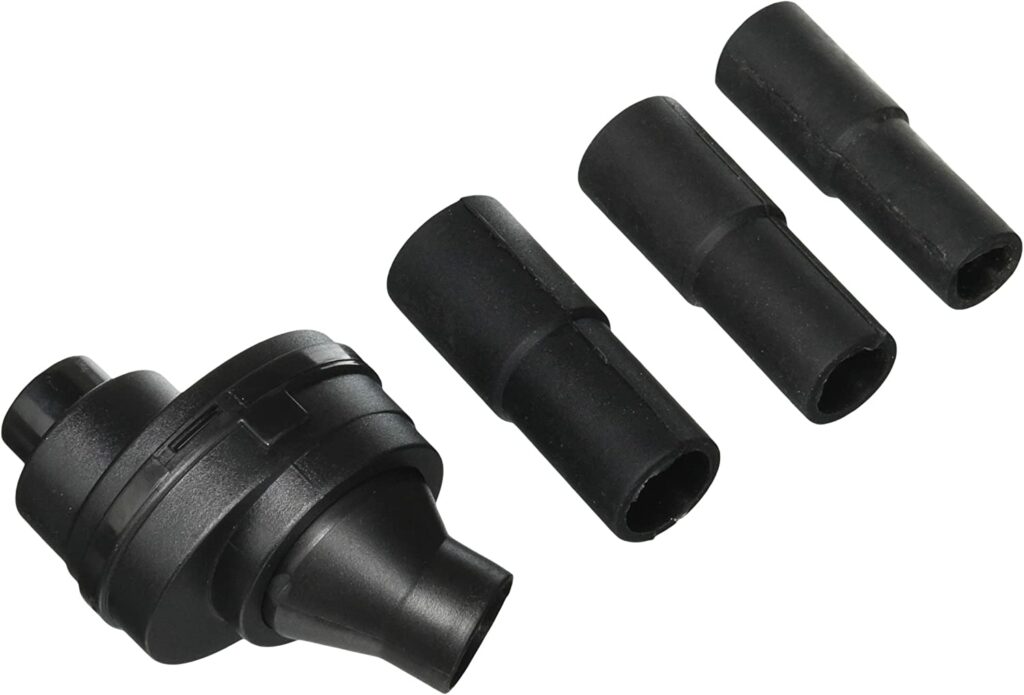
Available Here at Amazon.com
2. Power Heads
Small, submersible water pumps can be placed throughout the tank to create a constant flow of changing water movement. The more powerheads you place, the more turbulent the flow will become. They are a good product for those on a budget.
Take a look at this video where I showcase all the different types of flow devices for an aquarium:
3. Wave Makers
These are by far the most popular and best pumps in the hobby for creating strong, turbulent and random flow.
Most of these pumps are linkable to a controller to allow them to work in partnership with varying speeds and flow patterns. However, they are not cheap.
You can find a Great Wave Maker
Here at Amazon.com
4. Gyres
Gyres are a newer flow technology that creates a flat sheet of water moving across the aquarium. They can shift a tremendous amount of water and their sleek design make them easy to hide out of sight. Being a controllable pump also allows them to be linked and have controllable flow patterns.
You can find the Gyres Here at Amazon.com
5. Wave Boxes
Wave boxes are a nice way to discreetly hide a water moving powerhouse. A pump sits in the base of a box that fills with water before being dispersed into the aquarium creating a wave.
The controllability of the pump allows the wave size and timing to be altered to suit your aquarium and livestock.
You can find the Wave Boxes Here at Amazon.com
Just like the LED fixtures Guide, I also created a helpful article guiding you through all the different types of pumps and their uses within a saltwater aquarium:
Aquarium Pumps – What To Use & Where
To Finish
Keeping coral is an easy journey but only when you give the coral frags the best chance of settling in and thriving. Buy the best equipment you can afford and buy it once, be patient and add only a few frags at a time when your aquarium has finished its algae blooms and aim to keep your water stable.
The last part when adding your new coral is to start with the corals that are the most forgiving to allow you the greatest chance of success.
For a Great Selection of Beginner Corals I Highly Advise You to Read my Article:
19 Best Corals For Beginners – With Pictures
Further Reading
To help further your knowledge of keeping healthy coral you might find the following articles helpful:

